Traveling with a yoga mat in Vietnam can be a fantastic way to enhance your travel experience, allowing you to stay grounded and connected to your wellness routine amidst the excitement of exploring a new country. SIXT.VN can provide services such as yoga retreats, wellness tours, and personalized itineraries that incorporate yoga sessions in scenic locations. By integrating yoga into your travels, you’ll discover inner peace, experience the cultural richness of Vietnam, and enjoy an unforgettable vacation. Consider booking a wellness retreat through SIXT.VN for a truly transformative journey.
1. Why Practice Yoga While Traveling In Vietnam?
Practicing yoga while traveling in Vietnam provides a multitude of benefits, blending physical and mental wellness with the unique experience of exploring a new culture. It’s a way to maintain your fitness routine, reduce stress, and enhance your overall travel experience.
Yoga helps you sleep better, clear your head, and stretch your body after cramped flights or long days of exploring Vietnam’s cities and landscapes. Practicing yoga while traveling can also be a great way to connect with local communities and other travelers who share your passion for yoga and wellness. It’s also a fantastic way to immerse yourself in the local culture. According to research from the Vietnam National Administration of Tourism in 2023, travelers who incorporate wellness activities into their trips report higher satisfaction levels and a greater sense of connection to the destination.
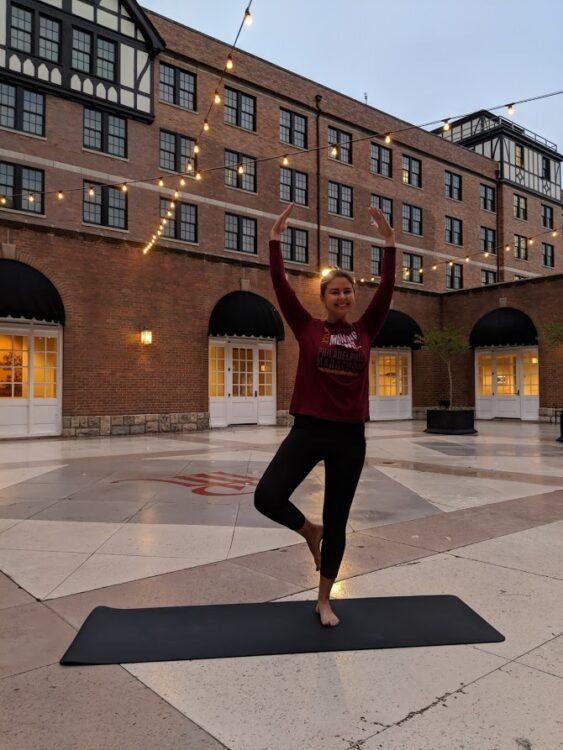 Yoga and meditation retreat in Vietnam's tranquil countryside
Yoga and meditation retreat in Vietnam's tranquil countryside
1.1. Benefits of Yoga for Travelers in Vietnam
Integrating yoga into your travel routine can offer many benefits:
- Reduces Stress: Travel can be stressful. Yoga helps calm the mind and reduce anxiety.
- Improves Sleep: Regular yoga practice promotes better sleep, essential for adjusting to new time zones.
- Enhances Physical Health: Yoga keeps you active, counteracting the effects of long flights and sedentary travel days.
- Connects Mind and Body: Yoga encourages mindfulness, helping you stay present and appreciate your surroundings.
- Cultural Immersion: Joining local yoga classes can be a unique way to interact with Vietnamese culture and meet locals.
1.2. How to Find Yoga Classes in Vietnam
Finding yoga classes in Vietnam is easier than you might think. Many cities and tourist destinations offer a variety of options, from traditional studios to outdoor sessions.
- Yoga Studios: Cities like Hanoi, Ho Chi Minh City, and Da Nang have numerous yoga studios offering classes in various styles, from Vinyasa to Hatha.
- Hotels and Resorts: Many hotels and resorts, especially those catering to wellness travelers, offer on-site yoga classes or have partnerships with local studios.
- Online Platforms: Websites like BookYogaRetreats.com and YogaTrail.com list yoga retreats and classes across Vietnam.
- Local Communities: Check local community boards, social media groups, and expat forums for information on classes and workshops.
- SIXT.VN: SIXT.VN can assist in finding and booking yoga classes or retreats tailored to your preferences and travel itinerary.
2. Do I Need A Travel Yoga Mat In Vietnam?
Deciding whether to bring a travel yoga mat to Vietnam depends on your yoga habits and preferences. If you plan to practice regularly, having your own mat can be a worthwhile investment for hygiene, comfort, and convenience.
If you are an avid yogi, you might want to bring one with you. You can improvise without a mat or you may lie a towel on your hotel room floor or do yoga without a mat at all in grassy parks or sandy beaches. According to a 2022 survey by TripAdvisor, 65% of yoga enthusiasts prefer using their own mats while traveling due to hygiene concerns and comfort.
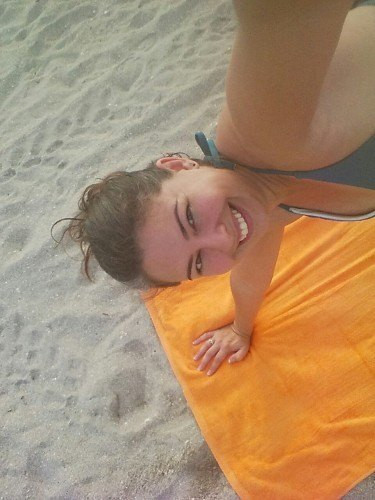 Yoga on a beach in Vietnam
Yoga on a beach in Vietnam
2.1. Alternatives to Bringing Your Own Mat
If you prefer not to Travel With A Yoga Mat, several alternatives are available:
- Hotel Mats: Some hotels provide yoga mats for guests, either in the rooms or in the fitness center.
- Rental Mats: Yoga studios often rent out mats for a small fee.
- Improvisation: Use a towel or practice directly on the floor, especially for gentle practices.
- Outdoor Options: Practice in parks or on the beach, taking advantage of Vietnam’s beautiful natural settings.
- SIXT.VN Partnerships: SIXT.VN partners with hotels and studios that offer quality mats and equipment, ensuring you have access to what you need.
2.2. Factors to Consider When Deciding
Several factors can influence your decision on whether to bring a travel yoga mat:
- Frequency of Practice: If you plan to practice daily, a travel mat is beneficial.
- Hygiene Concerns: If you are particular about cleanliness, bringing your own mat is preferable.
- Comfort and Support: If you require specific cushioning or grip, a familiar mat is essential.
- Convenience: Having your own mat means you can practice anytime, anywhere, without relying on rentals.
- Luggage Space: Consider whether you have enough space in your luggage to accommodate a mat.
3. What Are The Options For Packing A Yoga Mat For Travel To Vietnam?
Packing a yoga mat for travel to Vietnam requires some planning, especially if you are flying. Here are the most common options for bringing your mat:
3.1. Carry-On Options
Bringing your yoga mat as a carry-on is a convenient option, allowing you to keep it with you during your flight. The TSA even says so. If you go this route, I recommend paying for a mat strap or sling.
- Mat Straps and Slings: Use a strap or sling to keep your mat neatly rolled and easy to carry.
- Airport Yoga Rooms: Take advantage of yoga rooms in airports during layovers for a quick practice.
The problem with bringing a mat as your carry-on is it means you can’t bring a suitcase onboard…just a small personal item for underneath the seat and the yoga mat in the overhead bin. That may or may not work for you.
3.2. Checked Baggage
Checking your yoga mat is another option, especially if you don’t want to carry it through the airport. If you have a yoga mat bag, throw an address tag on it and you’re good to.
While I’ve put my regular mat inside of a 62″ checked suitcase, it will not fit in a carry on unless you smush and damage your mat.
- Yoga Mat Bags: Use a dedicated yoga mat bag to protect your mat during transit.
- Inside Suitcase: Pack the mat inside your suitcase to save space and avoid extra baggage fees.
Unfortunately, unless you get free checked bags, this is a costly way to transport it. Because of this, most people will want a mat that they pack inside of a suitcase they’re bringing anyway.
3.3. Foldable Yoga Mats
Foldable yoga mats are designed to be compact and easy to pack, making them ideal for travel. Luckily, I’ve done the trial and error for you and found an awesome foldable yoga mat for travel. It folds compactly and fits inside my personal item, carry-on, or any other suitcase!
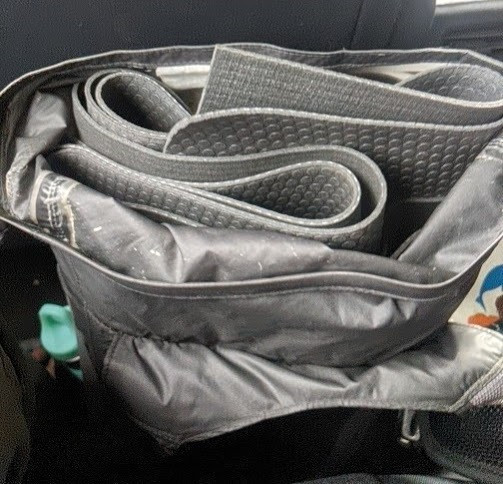 Foldable yoga mat
Foldable yoga mat
- Compact Design: Folds into a small, manageable size that fits easily in a suitcase or backpack.
- Lightweight: Typically lighter than traditional rolled mats, reducing overall baggage weight.
- Convenient Storage: Can be stored flat or folded, taking up minimal space in your luggage.
4. What Is The Best Foldable Yoga Mat To Take To Vietnam?
Choosing the right foldable yoga mat can significantly enhance your travel experience. Here are some of the best options, considering portability, comfort, and durability:
4.1. Manduka Pro Travel Mat
The Manduka travel mat folds easily to fit in my favorite day bag. The creases release with a shake or two when I’m ready to roll it out on the ground and it has an impressive amount of grip so I can do all types of poses.
Buying a foldable yoga mat took me from being an occasional travel-yogi to one who can squeeze it in whenever I want!
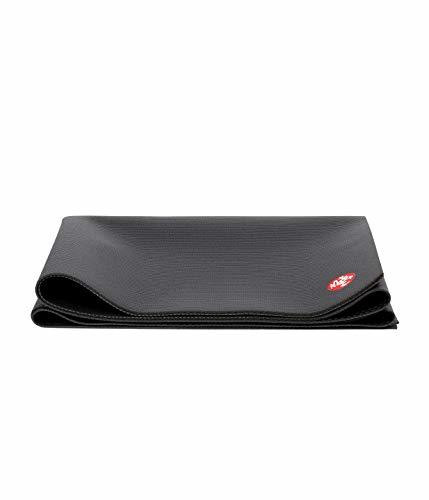 Manduka Pro Travel Yoga Mat
Manduka Pro Travel Yoga Mat
- Dimensions: 71 inches x 26 inches
- Thickness: 2.5mm
- Weight: 2.4 pounds
- Pros: Foldable, great grip, lightweight
- Cons: Pricey, zero cushion, you need to break it in (easy, but plan to do at home in advance – here’s how)
- Why It’s Great: Known for its exceptional grip and durability, this mat folds easily and is perfect for yogis who don’t want to compromise on quality while traveling.
4.2. YXWin Yoga Mat
The YXWin Yoga Mat is a lightweight option compared to standard mats with a full 6mm of comfortable cushioning. It doesn’t move around on the floor and has enough grip for casual use, but it doesn’t have that traditional rubber feel and isn’t intended for intense practice.
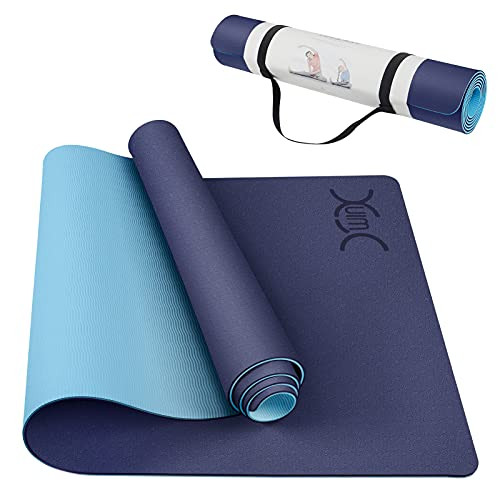 YXWin Yoga Mat
YXWin Yoga Mat
- Dimensions: 72 inches x 26 inches
- Thickness: 6mm
- Weight: 2.1 pounds
- Pros: Affordable, well cushioned, lightweight
- Cons: Edges curl if stored while rolled up, average grip, doesn’t fold
- Why It’s Great: This mat offers excellent cushioning and is a budget-friendly option for travelers looking for comfort and support.
4.3. Yogo Ultralight Folding Yoga Mat
I haven’t tried the Yogo mat, but it has a lot of design features perfect for travelers. It’s made from natural rubber so it should have tremendous grip. There are also straps attached to the mat itself for easy carrying without a case AND to easily hang it over a shower rod if you need to rinse it on-the-go. However, this is the thinnest mat on the list so don’t expect major support.
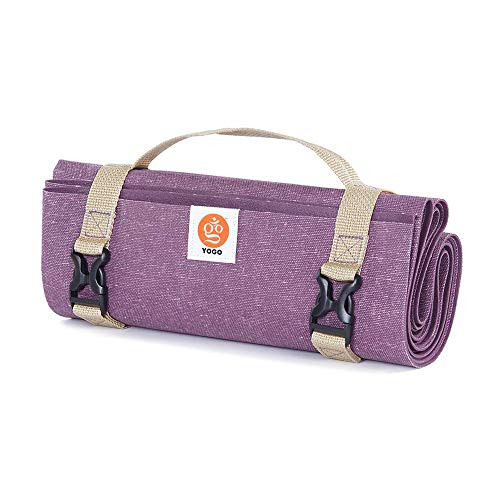 Yogo Ultralight Folding Yoga Mat
Yogo Ultralight Folding Yoga Mat
- Dimensions: 68 inches x 24 inches (long version is 72×29)
- Thickness: 1.5mm
- Weight: 2.1 pounds
- Pros: Lightweight, folds compactly, eco-friendly
- Cons: Very thin, expensive
- Why It’s Great: This eco-friendly mat is made from natural rubber and folds compactly, making it an excellent choice for environmentally conscious travelers.
5. How To Keep Your Yoga Mat Clean While Traveling In Vietnam?
Maintaining the cleanliness of your yoga mat is crucial for hygiene and longevity, especially in a humid environment like Vietnam. According to a study by the National Sanitation Foundation, yoga mats can harbor bacteria and fungi if not cleaned regularly.
5.1. Cleaning Tips
- Wipe After Each Use: Use a mat cleaner or a mix of water and tea tree oil to wipe down your mat after every practice.
- Air Dry: Allow your mat to air dry completely before rolling or folding it up.
- Deep Clean Regularly: Deep clean your mat every few weeks with a mild soap and water solution.
- Avoid Harsh Chemicals: Do not use harsh chemicals or bleach, as they can damage the mat.
- Use a Mat Towel: Place a yoga towel on top of your mat to absorb sweat and keep it cleaner during practice.
5.2. Products to Use
- Yoga Mat Cleaners: Purchase a specialized yoga mat cleaner from brands like Manduka or Gaiam.
- Tea Tree Oil: Add a few drops of tea tree oil to water for a natural antibacterial cleaning solution.
- Microfiber Towels: Use microfiber towels to wipe down your mat, as they are absorbent and quick-drying.
6. Where Are The Best Places To Do Yoga In Vietnam?
Vietnam offers numerous stunning locations for yoga practice, from serene beaches to tranquil mountain retreats.
6.1. Top Yoga Destinations
- Hoi An: Known for its peaceful atmosphere and beautiful beaches, Hoi An is perfect for sunrise and sunset yoga sessions.
- Da Nang: This coastal city offers beachfront yoga classes and stunning views of the East Sea.
- Nha Trang: With its clear waters and sandy beaches, Nha Trang is ideal for outdoor yoga and meditation.
- Sapa: Nestled in the mountains of northern Vietnam, Sapa provides a tranquil setting for yoga retreats and nature-inspired practices.
- Phu Quoc: This island paradise offers secluded beaches and lush landscapes, perfect for a relaxing yoga getaway.
6.2. Outdoor Yoga Spots
- Beaches: Practice yoga on the beach at sunrise or sunset for a refreshing and grounding experience.
- Parks: Many Vietnamese cities have beautiful parks where you can practice yoga surrounded by nature.
- Rooftops: Some hotels and studios offer rooftop yoga classes with stunning city views.
- Resorts: Many resorts have designated yoga spaces or offer classes in scenic outdoor settings.
7. What Yoga Videos Can I Use While Traveling In Vietnam?
Even if you can’t make it to a yoga class, there are plenty of online resources you can use to guide your practice while traveling.
7.1. YouTube Channels
- Yoga with Adriene: Offers a wide variety of yoga videos for all levels, focusing on accessibility and mindfulness.
- Fightmaster Yoga: Provides challenging and dynamic vinyasa flows for experienced yogis.
- Boho Beautiful: Features yoga and meditation videos set in beautiful locations around the world.
7.2. Yoga Apps
- Down Dog: This app is highly customizable (about $50/year) and is my favorite for travel.
- Peloton: The Peloton app ($13/month) which makes it feel like you’re in an instructor-led vinyasa class.
- Alo Moves: Offers a wide range of yoga and fitness classes, including beginner-friendly options and advanced practices.
8. How Can SIXT.VN Enhance Your Yoga Travel Experience In Vietnam?
SIXT.VN can significantly enhance your yoga travel experience in Vietnam by providing convenient and reliable services tailored to your needs.
8.1. Services Offered
- Airport Transfers: Arrange for hassle-free airport transfers to your hotel or yoga retreat.
Address: 260 Cau Giay, Hanoi, Vietnam. Hotline/Whatsapp: +84 986 244 358. Website: SIXT.VN. - Hotel Bookings: Choose from a wide selection of hotels and resorts that offer yoga facilities and wellness programs.
- Tour Packages: Book curated yoga tours that combine yoga practice with cultural experiences and sightseeing.
- Custom Itineraries: Create a personalized itinerary that includes yoga classes, workshops, and retreats tailored to your preferences.
- Local Transportation: Rent a car or hire a driver to explore Vietnam’s yoga destinations at your own pace.
8.2. Benefits of Using SIXT.VN
- Convenience: Enjoy a seamless travel experience with all your arrangements taken care of by SIXT.VN.
- Reliability: Trust in SIXT.VN’s reputation for providing reliable and high-quality services.
- Personalization: Tailor your yoga travel experience to your specific needs and interests.
- Support: Receive expert advice and assistance from SIXT.VN’s travel specialists.
- Value: Benefit from competitive prices and exclusive deals on hotels, tours, and transportation.
9. What Are The Latest Travel Tips For Vietnam?
Staying updated on the latest travel tips and guidelines is essential for a smooth and enjoyable trip to Vietnam.
9.1. Entry Requirements
- Visa: Check the latest visa requirements for your nationality before traveling.
- Passport: Ensure your passport is valid for at least six months beyond your intended stay.
- COVID-19 Regulations: Stay informed about any COVID-19 related entry requirements, such as vaccination certificates or testing.
9.2. Cultural Considerations
- Dress Modestly: When visiting temples and religious sites, dress respectfully, covering your shoulders and knees.
- Remove Shoes: Take off your shoes when entering someone’s home or certain temples.
- Bargain Respectfully: Bargaining is common in markets, but do so politely and with a smile.
- Learn Basic Phrases: Learning a few basic Vietnamese phrases can enhance your interactions with locals.
- Respect Local Customs: Be mindful of local customs and traditions, and avoid public displays of affection.
9.3. Safety Tips
- Stay Aware: Be aware of your surroundings and take precautions against petty theft, especially in crowded areas.
- Use Reputable Transportation: Use reputable taxi services or ride-hailing apps for transportation.
- Stay Hydrated: Drink plenty of water to stay hydrated, especially in hot and humid weather.
- Food Safety: Eat at reputable restaurants and street food stalls to avoid food poisoning.
- Travel Insurance: Purchase comprehensive travel insurance to cover medical emergencies and other unforeseen events.
10. Frequently Asked Questions (FAQs) About Traveling With A Yoga Mat In Vietnam
Here are some frequently asked questions to help you prepare for your yoga-infused trip to Vietnam:
10.1. Is it safe to practice yoga outdoors in Vietnam?
Yes, practicing yoga outdoors in Vietnam is generally safe, but take precautions such as wearing sunscreen, staying hydrated, and being aware of your surroundings.
10.2. Can I rent yoga mats in Vietnam?
Yes, many yoga studios and some hotels offer yoga mat rentals for a small fee.
10.3. What is the best time of year to visit Vietnam for yoga retreats?
The best time to visit Vietnam for yoga retreats is during the dry season, from November to April, when the weather is pleasant and ideal for outdoor activities.
10.4. Are there yoga retreats specifically for beginners in Vietnam?
Yes, many yoga retreats in Vietnam cater to beginners, offering introductory classes and personalized instruction.
10.5. How can I find local yoga classes in Vietnam?
You can find local yoga classes through online platforms, hotel partnerships, and community boards. SIXT.VN can also assist in finding and booking classes.
10.6. What should I pack for a yoga retreat in Vietnam?
Pack comfortable yoga clothes, a travel yoga mat, sunscreen, insect repellent, and any personal items you need for your practice.
10.7. Are there any cultural considerations I should keep in mind when practicing yoga in Vietnam?
Be mindful of local customs and dress modestly when practicing yoga in public or at religious sites.
10.8. How much does it cost to attend a yoga retreat in Vietnam?
The cost of a yoga retreat in Vietnam varies depending on the location, duration, and amenities offered. Prices can range from a few hundred to several thousand dollars.
10.9. Can SIXT.VN help me plan a customized yoga tour in Vietnam?
Yes, SIXT.VN can create a personalized itinerary that includes yoga classes, workshops, and retreats tailored to your preferences.
10.10. What are some popular yoga styles practiced in Vietnam?
Popular yoga styles practiced in Vietnam include Hatha, Vinyasa, Ashtanga, and Yin yoga.
By following these guidelines and utilizing the services of SIXT.VN, you can enjoy a fulfilling and enriching yoga travel experience in Vietnam, balancing wellness with the exploration of this beautiful and culturally rich country.



